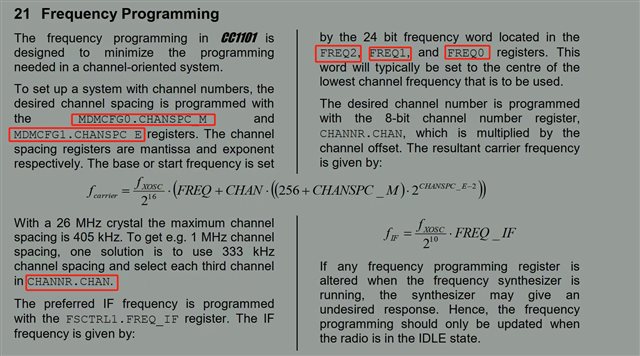Hi,
In my application, the user would input a value to specify the carrier frequency they would like to use. And based on this frequency value, I need to configure the related registers in my code.
According to my current understanding, this should include the registers highlighted in the red box in the diagram below.

Since this is like I'm facing a challenge akin to dealing with a multivariable function, where I know one function value(the frequency input by user) and need to deduce the values of several independent variables(the register bits). Since one function value may correspond to several different combinations of independent variable values, I find myself perplexed about how to configure the registers correctly. I'm worried that different register configurations might lead to unexpected issues.
I work as a software engineer, and despite going through numerous posts, I still lack sufficient understanding of RF theory. Hence, I'm seeking guidance on how to ensure reliability and effectiveness. I'm aware that in SmartRF Studio, one can input the Base Frequency, and the software automatically configures relevant registers, but I'm not quite clear on the specific mechanism and algorithm involved.
Any assistance would be greatly appreciated. Thanks in advance!"

